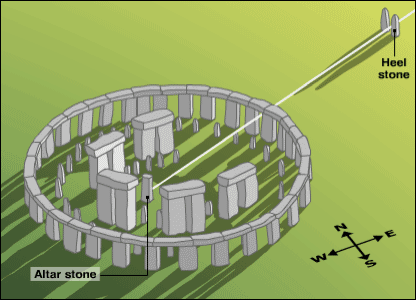The month names in Hindu calendar are given with the nakashatram which falls on the full moon day in that particular month. As the Jyeshta nakshatram (star) falls during Pournami or Full Moon day in this month, hence known as Jyeshta maasam. Some of the festivals performed in this month.
Bhagirathi Jayanthi – June 11, 2011
Bhagirathi Jayanthi is believed to be the day when River Bhagirathi appeared on earth. The word ‘Bhagirathi’ in Sanskrit literally means caused by Bhagiratha. It is observed on the 10th day during the waxing phase of moon in Jyeshta month. It is believed that King Bhagiratha succeeded in bringing Ganga down to earth on this day after a long penance. Bhagirathi, the source stream of Holy River Ganga, was brought down on to the Earth to find salvation for his 60,000 ancestors, who were cursed by Saint Kapila. Therefore, Ganges descended to the Earth through the lock of hair of Lord Shiva to make whole earth pious, fertile and wash out the sins of humans. For Hindus in India, the Ganges is not just a river but a mother, a goddess, a tradition, a culture and much more. Bhagirathi Jayanthi is observed on the Ganga Dashara day and both celebrates the origin of Ganga River on earth.
Nirjala Ekadashi (11thday of waxing moon) – June 12, 2011
Nirjala means ‘without water.’ Ekadashi is the eleventh day of waxing or waning moon. Vishnu devotees fast every Ekadashi of a fortnight. There is a story that Bhima, the second of Pandava brothers, wanted to observe Ekadasi fasting but still eat food. He never used to fast as he could not control his hunger. He always had a guilt feeling of not observing fast every Ekadashi as his mother and brothers used to fast. Then his grandfather, Sage Veda Vyasa advised him to fast on Nirjala Ekadashi day in Jyeshta maasam as it has the benefits of observing all the 24 Ekadashis. Thus Bhima was able to get the benefits of all Ekadasis by observing Nirjala Ekadashi. Observing it is also equal to going on pilgrimage.
Lunar Eclipse-June 15 The Chandra Grahan is a lunar eclipse. According to NASA website it is visible in India along with most middle-eastern countries, Singapore, Malaysia and western parts of Australia. The Chandra grahan will be taking place in India between 11:53 PM on June 15 to 03:32 AM early morning on June 16, 2011. We all are well aware of how eclipses are formed in our science class; I guess I don’t have to go over here again. Right?
Hindu holy scriptures mention about the Surya Grahan (solar eclipse) and Chandra Grahan (lunar eclipse) in the Samudra Manthan (churning of the ocean) episode in the puranas. Vishnu in the form of Mohini(female form) was distributing the amrutham (holy nectar) after the Samudra Manthan to the Devas (Gods) and Asuras (demons). Both were sitting on each side and Rahu the planet played mischief by sitting in the Devas line, Sun and Moon god’s recognized Rahu so Vishnu severed the head of Rahu. Since then Rahu in the form of snake takes revenge on Sun and Moon by gobbling them partially and periodically. Sun and Moon fight back to free themselves.
Usually fasting is observed few hours before the start of the eclipse until it is cleared. Special bath is taken and mantras are chanted dedicating to Lord Vishnu and Shiva. Pregnant women are taken utmost care and advised to be indoors so the bad rays during the eclipse are not fallen on the baby in the womb.
Vat Savithri Vratha
Vat Savithri Vratha is an auspicious day observed during the full moon day or new moon day, in some regions, by married women for the welfare of the husband and children. Vat Vraksha or Banyan tree symbolically represents the Trimurtis – Brahma, Vishnu and Shiva. The root is Brahma, the stem is Vishnu and the upper portion is Shiva. The whole tree is also symbolically taken as Savithri. The incident is mentioned in the Mahabharata.
It is described that Princess Savithri, the daughter of King Ashwapati of Bhadra Kingdom, fell in love with Satyavan, a woodcutter. But Satyavan was destined to die within a year and Savithri was made aware of this fact by Rishi Narada. But Savithri decided to get married to Satyavan and live with him in the forest. As predicted, Satyavan fell from a tree and died within a year. Yamraj, the god of death, arrived to carry him away. Savithri made it clear to Yamraj that she will follow Yamraj along with her husband. Yamraj tried several ways to deter Savithri from following him but all his efforts were in vain and Savitri remained adamant. Finally, Yamraj was moved by Savithri’s devotion and he brought back Satyavan to life. It is believed that Satyavan spend his last moments under a Vat or Banyan tree on the full moon day in month of Jyeshtha. And Yamraj appeared right near the banyan tree and Savithri pleaded with Yamraj under the Banyan tree. In memory of this event, women go round the Banyan tree for 108 times tying threads and fast for the health and longevity of their husbands.
It is the beginning of peak summer season indicated by 'greeshma ritu' that will continue for two months starting Jyestha maasam.





